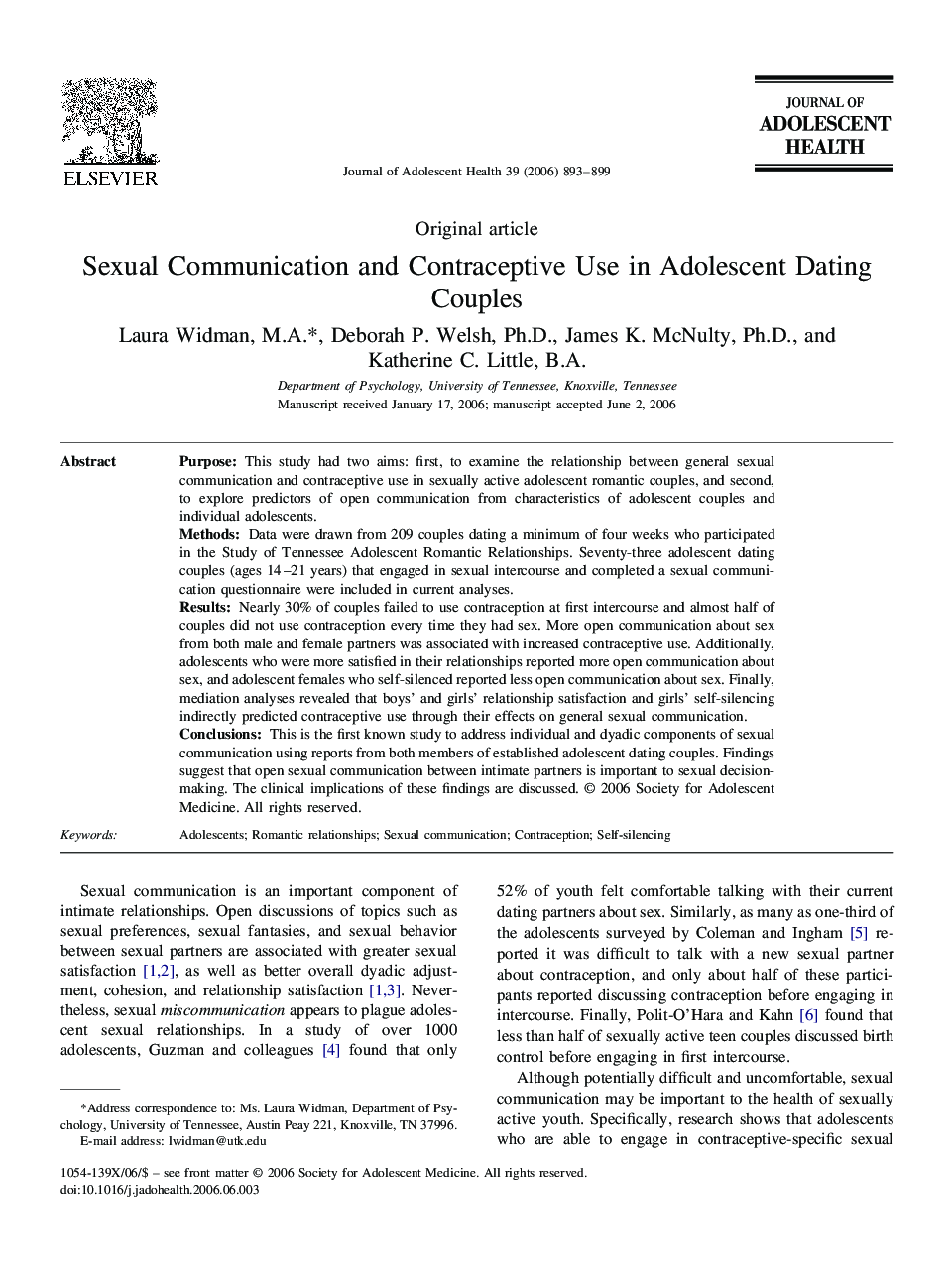| Article ID | Journal | Published Year | Pages | File Type |
|---|---|---|---|---|
| 1081667 | Journal of Adolescent Health | 2006 | 7 Pages |
PurposeThis study had two aims: first, to examine the relationship between general sexual communication and contraceptive use in sexually active adolescent romantic couples, and second, to explore predictors of open communication from characteristics of adolescent couples and individual adolescents.MethodsData were drawn from 209 couples dating a minimum of four weeks who participated in the Study of Tennessee Adolescent Romantic Relationships. Seventy-three adolescent dating couples (ages 14–21 years) that engaged in sexual intercourse and completed a sexual communication questionnaire were included in current analyses.ResultsNearly 30% of couples failed to use contraception at first intercourse and almost half of couples did not use contraception every time they had sex. More open communication about sex from both male and female partners was associated with increased contraceptive use. Additionally, adolescents who were more satisfied in their relationships reported more open communication about sex, and adolescent females who self-silenced reported less open communication about sex. Finally, mediation analyses revealed that boys’ and girls’ relationship satisfaction and girls’ self-silencing indirectly predicted contraceptive use through their effects on general sexual communication.ConclusionsThis is the first known study to address individual and dyadic components of sexual communication using reports from both members of established adolescent dating couples. Findings suggest that open sexual communication between intimate partners is important to sexual decision-making. The clinical implications of these findings are discussed.
